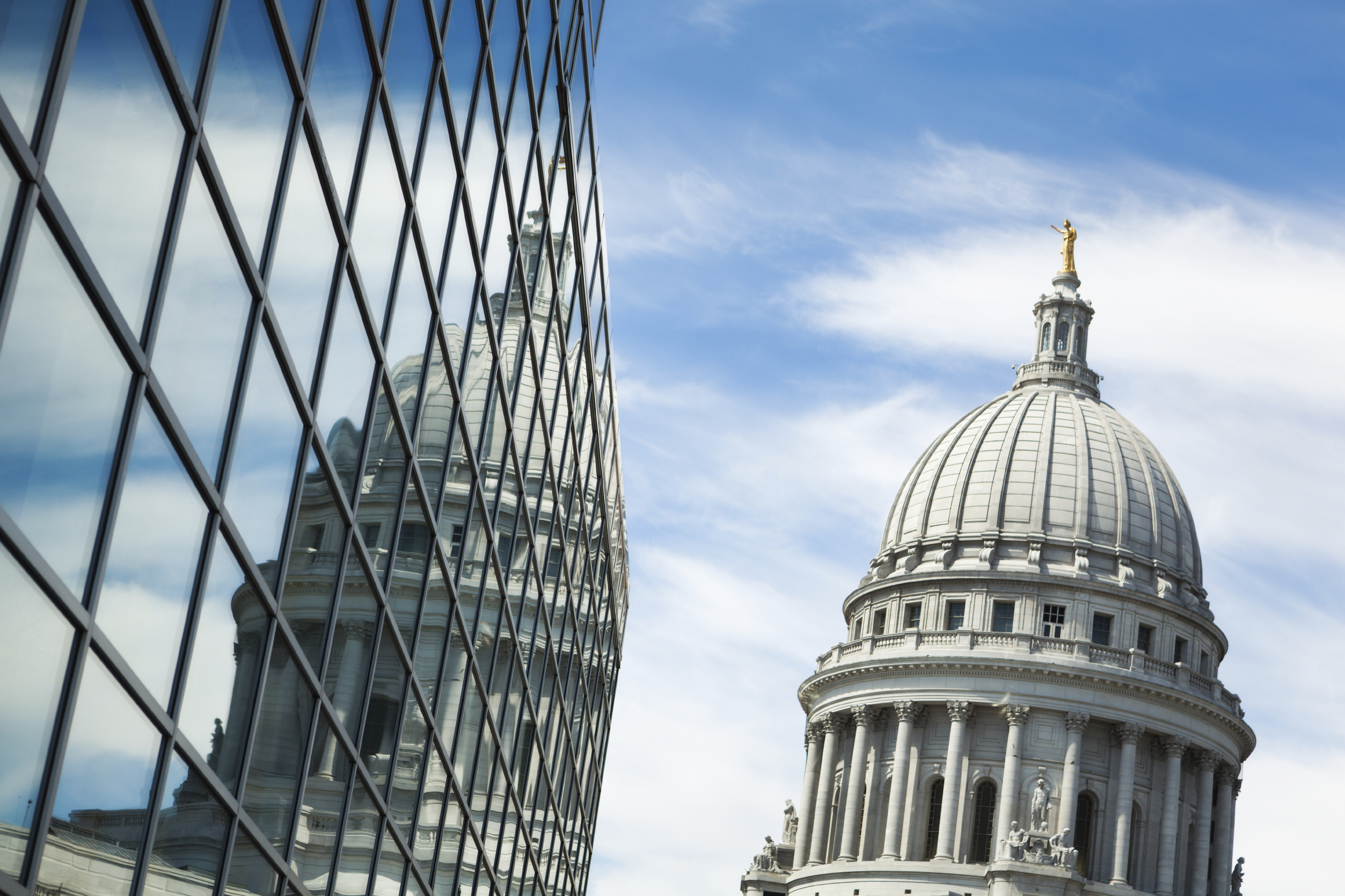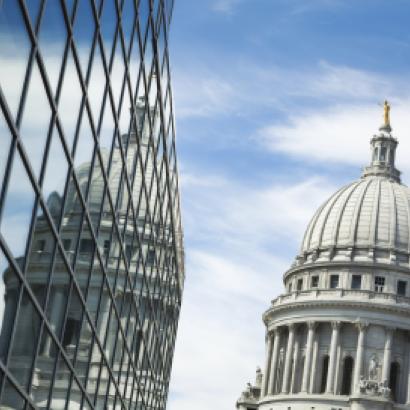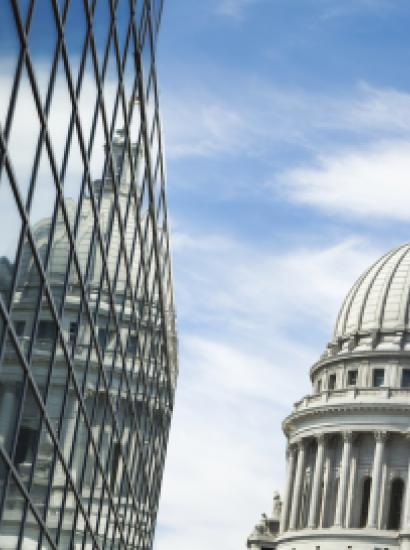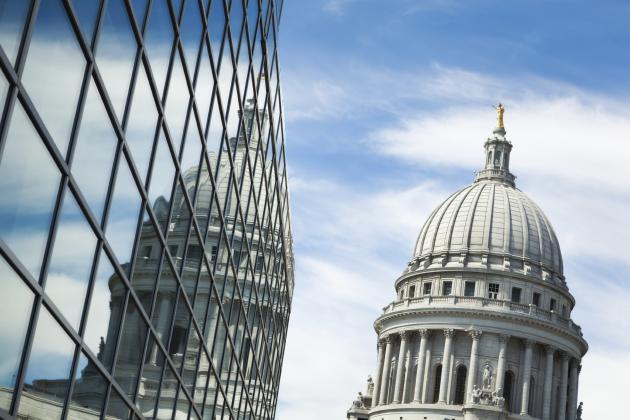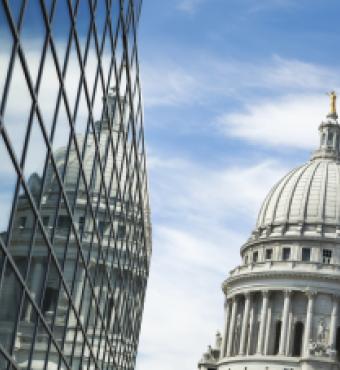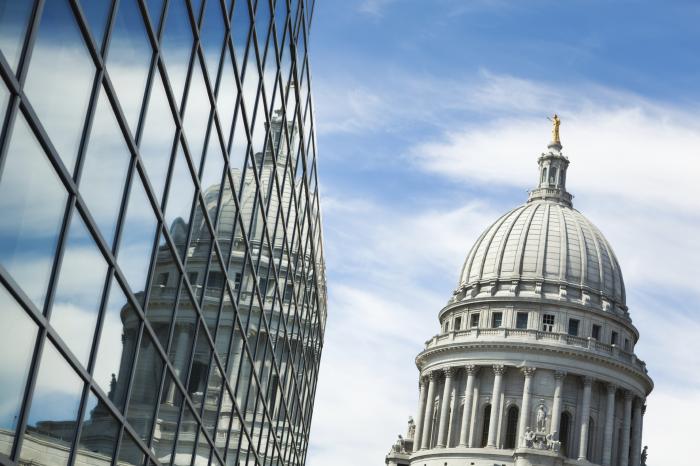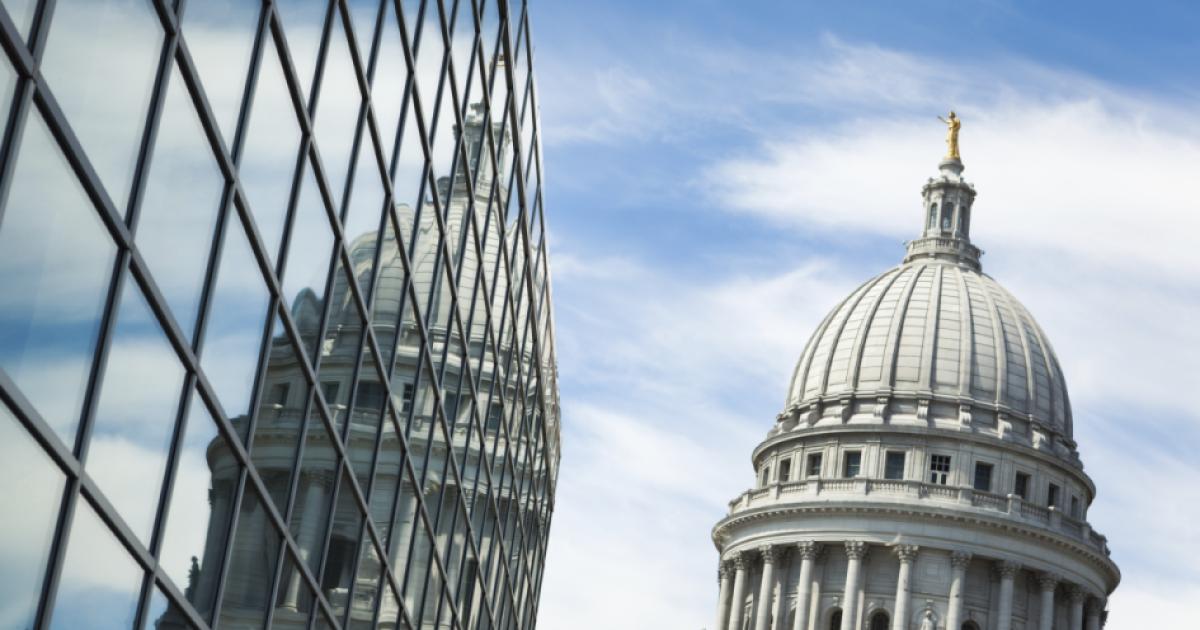The year 2020 gave us a huge amount of evidence about the relative merits of government intervention and free markets. The bottom line is that government failed massively and free markets triumphed spectacularly (with one major exception) within the constraints that government placed on them. The one apparent exception to government failure is Operation Warp Speed but, as we shall see, that apparent exception may not be an exception at all.
As early as April 8, when most of the government lockdowns had been in place for only about three weeks, I noted, in “Covid v. Capitalism,” the drastically different performances of private individuals and businesses on the one hand and government on the other. In the intervening nine months, these differences have become even more pronounced.
Consider first the bad news: government. An important step early on in the pandemic would have been to have widespread testing for the coronavirus. On February 6, the World Health Organization (WHO) announced that it had shipped 250,000 tests to over seventy laboratories worldwide. But the US Centers for Disease Control insisted on producing its own. The test that the CDC came up with at first had huge problems so the insistence on rejecting something not invented in the United States cost the country valuable weeks, which is a lot of time when a highly contagious disease is spreading. When CNN’s chief medical correspondent, Dr. Sanjay Gupta, asked Dr. Anthony Fauci, director of the National Institute of Allergy and Infectious Disease and an important member of the White House Coronavirus Task Force, if the United States should have used the WHO tests, Fauci answered, “If you look back and Monday morning quarterback, it would have been nice to have had a backup.”
It’s hard to blame Fauci for this mess-up. For one thing, he’s not an employee of the CDC. But it’s not hard to blame government. After all, the Food and Drug Administration insists that people and companies that develop medical tests, even if those tests are not drugs, first get approval before marketing them. So regulation by the FDA was a culprit here, and, as we shall see, was a culprit in slowing down the all-important COVID-19 vaccine.
A Blunt Instrument
One of the biggest government mess-ups was state and local government lockdowns of their economies. Although this has not been well publicized, epidemiologists themselves, before the pandemic, seemed to have a consensus that lockdowns were a bad idea. In a September 2019 report from the Johns Hopkins Center for Health Security, for instance, the authors stated:
In the context of a high-impact respiratory pathogen, quarantine may be the least likely NPI [nonpharmaceutical intervention] to be effective in controlling the spread due to high transmissibility. To implement effective quarantine measures, it would need to be possible to accurately evaluate an individual’s exposure, which would be difficult to do for a respiratory pathogen because of the ease of widespread transmission from infected individuals.
Yet massive quarantines were the main policy implemented by state and local governments.
The first state to lock down was my state of California, where Governor Gavin Newsom announced a statewide lockdown on March 19. Why do I call this a mess-up? Because the lockdown was not based on a careful analysis but, rather, was a one-size-fits-all approach. It took no account of differences between urban and rural areas, for example. Also, Newsom and other governors, in deciding which sectors to exempt from the lockdown, took an off-the-shelf list from the Department of Homeland Security of sixteen sectors regarded as “critical infrastructure.” Many of the sectors in the list of sixteen make sense. For example, food and agriculture, dams, health care, and energy are pretty important. But listed also in the “Transportation Systems Sector” is a subsector called “Mass Transit and Passenger Rail.” Yet mass transit would seem to be an area ripe for closing down given the likely spread of the virus among people close to each other on, say, a subway.
And how have the lockdowns worked? Remember that the original purpose of the lockdowns was to “flatten the curve.” This strategy was based on two ideas. The first was that it was important to reduce the number of people needing to go to hospitals so that the hospitals would not be overwhelmed. The second was that if disease and death were postponed, they might be postponed indefinitely, because we would either find cures or get effective vaccines.
Yet a look at the evidence as of January 4 gives little basis for the view that lockdowns reduced deaths. It’s true that the COVID-19 death rate for locked-down California, at 675 per million residents, is well below the 988 and 1,029 for, respectively, Texas and Florida, which are relatively open. But the death rates for locked-down Michigan, New York, and New Jersey, at 1,341, 1,980, and 2,180 respectively, are well above the rates for Texas and Florida. To be sure, a more careful analysis that sifts through the data and accounts for factors other than lockdown—maybe climate matters—is needed. But on their face, the data give cold comfort.
Moreover, what if a more careful analysis did show that lockdowns prevented COVID-19 deaths? That’s not a slam-dunk case for lockdowns because the costs of lockdowns are huge. They are shattering the careers and livelihoods of hundreds of thousands of restaurant workers, haircutters, gymnasium workers, and others. One might argue that the sacrifice is worth it, but isn’t it easier for vulnerable people, most of whom are old and have co-morbidities, to stay home? They would have to stay home anyway, so why insist that others who are younger and have fewer co-morbidities also stay home? Interestingly, California’s Secretary of Health and Human Services, Mark Ghaly, let the mask (pun intended) slip on December 9 when he admitted that the newly imposed ban on outdoor dining was “not a comment on the relative safety of outdoor dining.” You read that right. What, then, was his and Newsom’s purpose in putting tens of thousands of restaurant livelihoods at risk? Ghaly ’fessed up that the measure had to do “with the goal of keeping people at home.” But wouldn’t he and the other officials need to know what people prevented from dining out would do? What if a number of them instead went to other people’s houses and dined in? We were told again and again that policy decisions must be based on science, only to learn that many such decisions were made by politicians and bureaucrats who had no scientific basis for their decisions.
And where the lockdowns get close to insane is in K-12 schools. As fellow economist Ryan Sullivan and I wrote in “End the School Shutdown,” on October 20 in the Wall Street Journal, [the ungated version is here], data presented on 200,000 kids in forty-seven states in the last two weeks of September showed a low COVID-19 case rate of 0.13 percent among students and 0.24 percent among staff. Recent data collected by the Centers for Disease Control show that as of December 26, only 102 US residents fourteen or younger have died of COVID-19. As we wrote, “During the 2019-20 flu season, the CDC estimates, 434 children under eighteen died of the flu. Yet we don’t shut down schools over the flu.” Interestingly, the schools that are open are disproportionately private schools. In San Diego County, for example, “about 84 percent of private school students are attending school in-person to some degree,” compared to only 32 percent of public school students. That’s predictable. Public schools get their funds whether or not the students attend in person. Private schools, by contrast, have to earn those tuitions. The children who are suffering most tend to be low-income, mainly because they tend to be in public schools.
While the harshest lockdowns were disproportionately those of Democratic governors—think Whitmer, Cuomo, and Newsom, governors of Michigan, New York, and California, respectively—one large bipartisan failure at the federal level was and is massive increases in government spending. The $2.2 trillion CARES Act, passed in March, was badly targeted, giving up to $1,200 to adults and $500 per child under age seventeen, depending on income, but not depending on income loss. And a major part of the act that was targeted, the increase in unemployment benefits by $600 per week, was badly thought out, giving many millions of unemployed workers substantially more to be unemployed than to be employed. Peter Ganong, Pascal Noel, and Joseph Vavra, all economists at the University of Chicago, in an August 24 study, “US Unemployment Insurance Replacement Rates During the Pandemic,” found that between April and July 2020, 76 percent of workers would receive benefits that exceeded their lost earnings.
I detail other major failings of the CARES Act in “The Anti-Stimulus Bill.”
Private Sector Heroes
Consider, by contrast, the private sector. One reason that millions of people have been able to stay at home is that companies like Zoom have made our work from home possible. Note also that one reason we have Zoom is that years ago the US government allowed the founder of Zoom, Eric Yuan, to immigrate from China. If you want to count that as a success of government, you should note that the US government denied his visa applications eight times. The ninth time was the charm. And one reason we have been able to buy items when stores are closed is that Amazon has heroically stepped up to sell us items over the web and, although deliveries are slower than they were, presumably because of volume, they are still relatively quick. In case you’re worried that Yuan and Amazon pioneer Jeff Bezos are getting rich off us, they are. But our wealth from them is forty-five times their wealth from us. In 2004, Yale University economist and Nobel Prize winner William D. Nordhaus found that innovators keep for themselves approximately 2.2 percent of the value they create and that the rest goes to consumers.
In “Covid v. Capitalism,” I give a number of examples of private sector innovation and also voluntary charitable activity that broke out all over the country. But I’ve left out possibly the most important private sector victory: the discovery and production of two highly effective vaccines in under a year.
I noted above that in one major area the private sector did not perform well. That sector is the mainstream media. The media tended not to report on any dissent from lockdowns or, if it did so report, looked for visuals that would make lockdown opponents look bad. In the spring, for example, many in the media highlighted the appearance of swastikas on posters at a protest against lockdowns in Lansing, Michigan, failing to point out that the people who held the signs were probably not Nazis but, instead, were accusing Governor Whitmer of totalitarian tendencies. Overdone? Yes. And the media could have made that point. But they settled for the sleazy hit.
Also, when prominent medical experts such as former Trump adviser and Hoover Senior Fellow Scott Atlas argued that the lockdowns had terrible costs, many in the media attacked him for not being an epidemiologist, a charge that they could have also applied to infectious-disease expert Anthony Fauci, and falsely accused Atlas of advocating a strategy of “herd immunity.” Many in the media harped on the idea that “we’re all in this together.” The statement is literally true—and incredibly misleading. Much more helpful would have been a reminder of how low the risk is for children and for adults under age sixty who don’t have co-morbidities. Moreover, the media reported easy-to-measure COVID-19 cases rather than infections, which, research showed, were a large multiple of cases. By dividing fatalities by cases rather than infections, they reported fatality rates of well over 1 percent, whereas the percent of infections that result in death is well under 1 percent.
Readers might wonder if I’ve left out the biggest government triumph, Operation Warp Speed. Yes and no. On the one hand, it’s reasonable to claim that without the federal government’s pre-commitment to purchasing hundreds of millions of vaccine doses, progress would have been slower. It’s also reasonable to claim that the pharmaceutical companies, understanding the huge amount that millions of people would have been willing to pay for the vaccine, didn’t need that commitment. Moreover, putting the government in charge of distribution has slowed down vaccinations even more than I had feared when I wrote “Vaccines’ Last Hurdle: Central Planners,” (Defining Ideas, December 4). It is true that the Trump administration pushed the FDA to get off its butt and approve vaccines more quickly than is its wont, but that’s an example of reducing government intervention, not increasing it. Finally, as Charles L. Hooper and I have shown in “The FDA’s Deadly Caution,” (AIER, December 16), without FDA regulation we likely could have had vaccine production by the spring of 2020.
A careful look at 2020 shows us the multitude of ways that governments fail and markets succeed.







